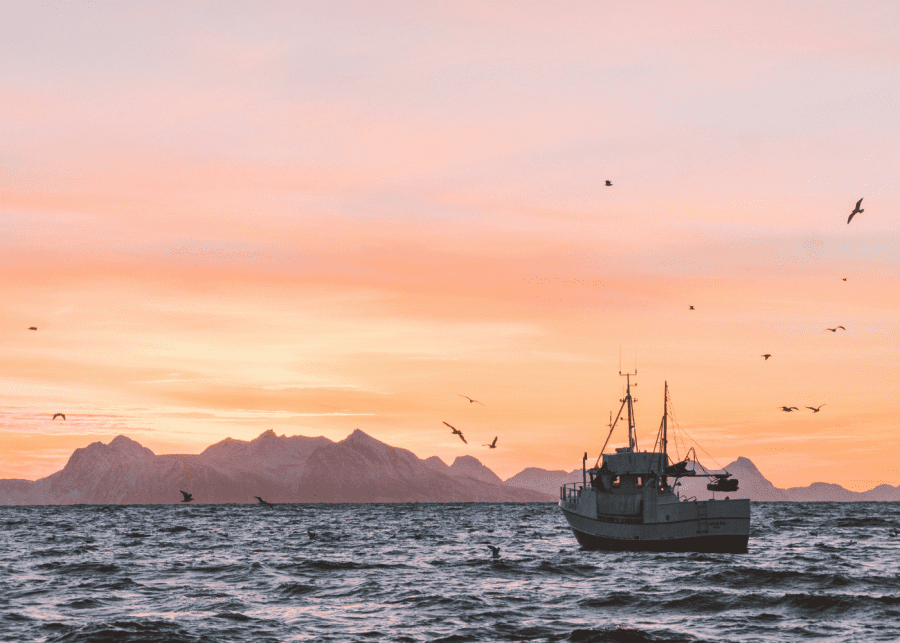
Diving into the waters of commercial fishing and ocean conservation, Seaspiracy surfaces one shocking revelation after another.
Seaspiracy is the latest Netflix documentary that has social media all abuzz with divided opinions. Its premise is deceivingly simple: a filmmaker who has a love for ocean life sets out to chronicle the damaging impact of humans on marine creatures… and unearths corruption in the process. But what that synopsis fails to express is the jaw-dropping effects of each information bomb. In 90 minutes, the exposé opens fire on everything it believes to be standing in the way of saving our seas. TBH, it took me on an emotional rollercoaster. And it revealed a lot I never knew beyond the usual argument against single-use plastics.
Perhaps it’s not surprising that Seaspiracy is brought to us by the same folks behind Cowspiracy, another provocative documentary that horrified viewers into veganism. Directed by British filmmaker Ali Tabrizi, the story wades most memorably into the waters of commercial fishing and the impact of that on marine life. However, it’s one thing to advocate for land animals that we see as furry friends – it’s another to get people fired up about saving slippery, scaly, cold-blooded fish.
Clearly, the documentary has its own agenda: eating seafood is bad, swapping that out for plant-based foods is good. It leans towards sensationalism, leading to backlash from marine conservation groups and experts that call it ‘misleading’. It’s also been accused by Plastic Pollution Coalition of cherry-picking comments to fit its narrative. Whether you believe it’s all a conspiracy or you’re fully inspired to change your eating habits, Seaspiracy has at least done one thing we can all agree on: fuel the conversation on marine conservation. Here are some things you’ll glean from the doc.
1. Plastic straws aren’t the main problem

I’m all for sustainable swaps and wiping out single-use plastics to help the environment. Just take a look at the Great Pacific Garbage Patch, the globe’s biggest pile of garbage that floats between Hawaii and California. But plastic straws aren’t the biggest villain – they only make up 0.03% of total plastic waste, as Seaspiracy claims. Abandoned fishing equipment actually account for a whopping 46% of trash in the ocean. They’re rarely talked about, but these ‘ghostnets’ are dangerous as they can strangle or injure whales, dolphins, turtles and seals.
2. Is sustainable fishing a lie?

The film suggests that fishing has wiped out 90% of the world’s large fish population. We’re told to eat sustainably sourced fish and look for labels like Dolphin Safe and Marine Stewardship Council (MSC) certification. But can they guarantee your fish didn’t inadvertently cause the death of a dolphin? This goes unanswered in the documentary, which questions the concept of sustainable seafood. Having serious doubts about my own can of tuna sitting in the fridge, I checked it and found a now-suspicious ‘dolphin friendly’ stamp on the side.
However, MSC has since responded to shed light on the transparency and independence of its certification process. While it admits overfishing is a problem, it explains that ‘fish stocks can recover and replenish if they are managed carefully for the long-term’. The Earth Island Institute has also clarified that ‘the dolphin-safe tuna program is responsible for the largest decline in dolphin deaths by tuna fishing vessels in history.’ Still, how do you police something as vast as the ocean?
3. Bycatch and bottom trawling are big issues

Commercial fishing methods see the use of massive fishing nets that rake the ocean floor to catch fish – and leave destruction in their wake. Seaspiracy says 3.9 billion acres are deforested every year thanks to bottom trawling. In comparison, land deforestation adds up to 25 million acres each year. I don’t know about you, but all that sounds rather alarming.
Another problem with hauling up a huge catch? Everything else is ensnared – even unintended creatures. That includes sea birds, sharks and dolphins. Although they’re typically tossed back into the sea, their chances of survival are low. According to the docu, 50 million sharks are caught each year as a result of bycatch.
4. You’ve heard of blood diamonds, but ‘blood shrimp’?
In the film, environmental journalist George Monbiot talks about ‘blood shrimp’, using it to describe labour exploitation and slavery in the fishing industry. Scenes show the filmmakers making a trip to Thailand to anonymously interview fishermen who say they suffered abuse on fishing trawlers for years. It’s abhorrent, but nothing that hasn’t been covered before.
5. The only ethical thing left to do: Stop eating fish

That’s a bold claim. But is it possible to take seafood completely off the dinner table? MSC argues: ‘With the global population set to reach 10 billion by 2050, the need to harness our natural resources more responsibly is more urgent than ever. Sustainable fishing has a vital role to play in securing those resources.’
As eye-opening as Seaspiracy is – raising environmental issues not many are aware of – it has its bias. But it’s worth a watch. Just be warned that some scenes are pretty graphic and you may have to pop seasick pills to combat your nausea from the disturbing revelations. Another side effect? You’ll look at seafood in a different light. I’m certainly left questioning my own eating habits!

